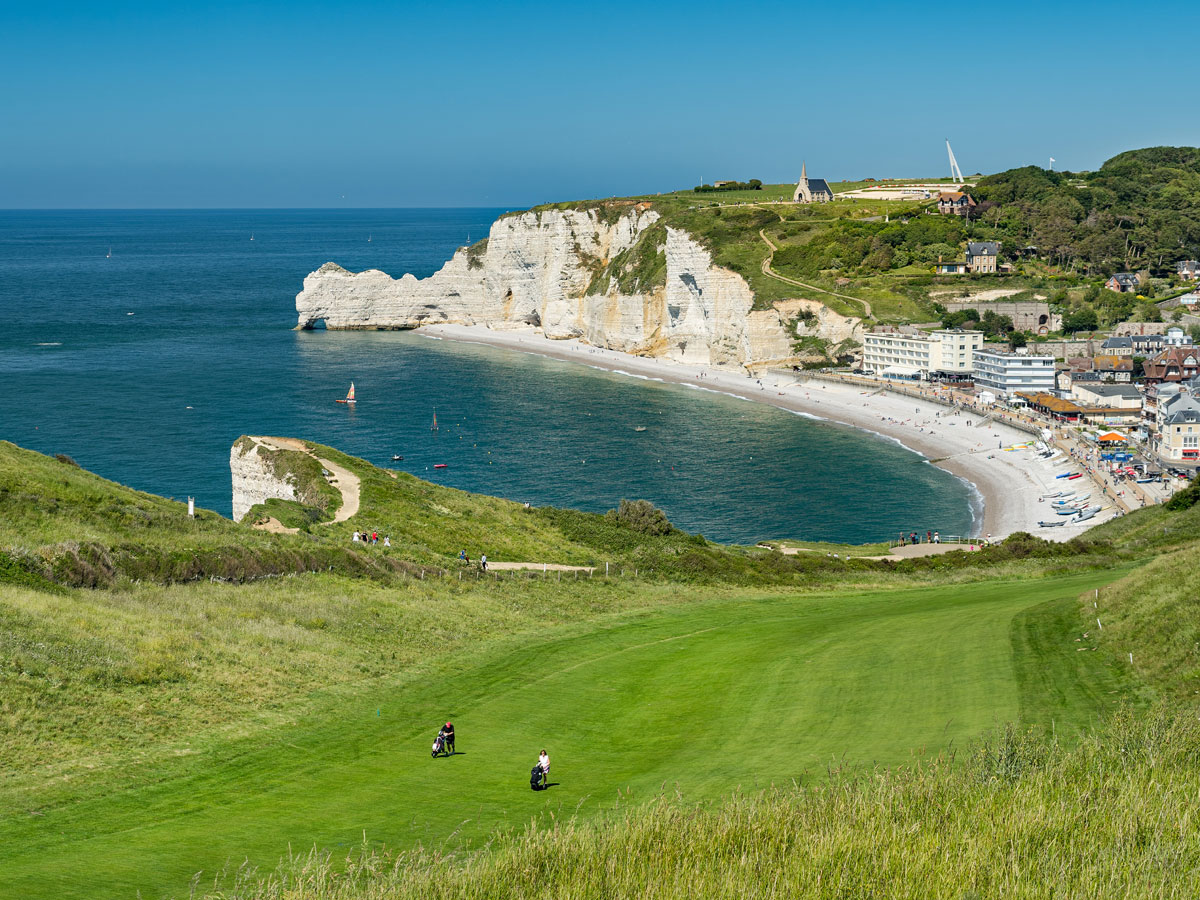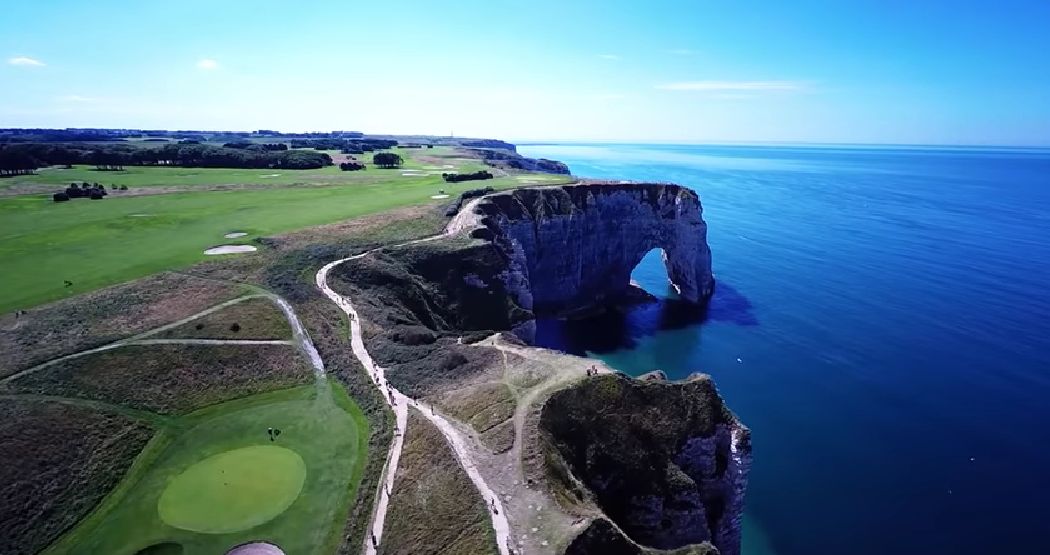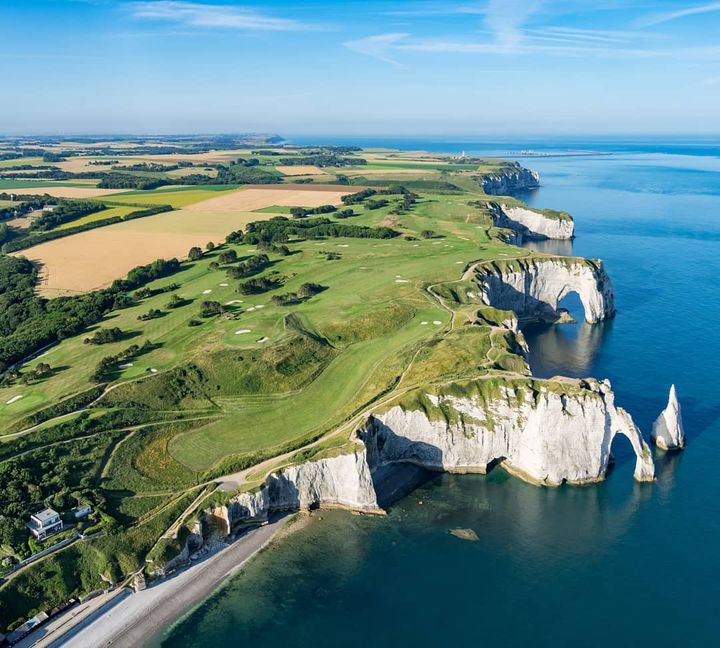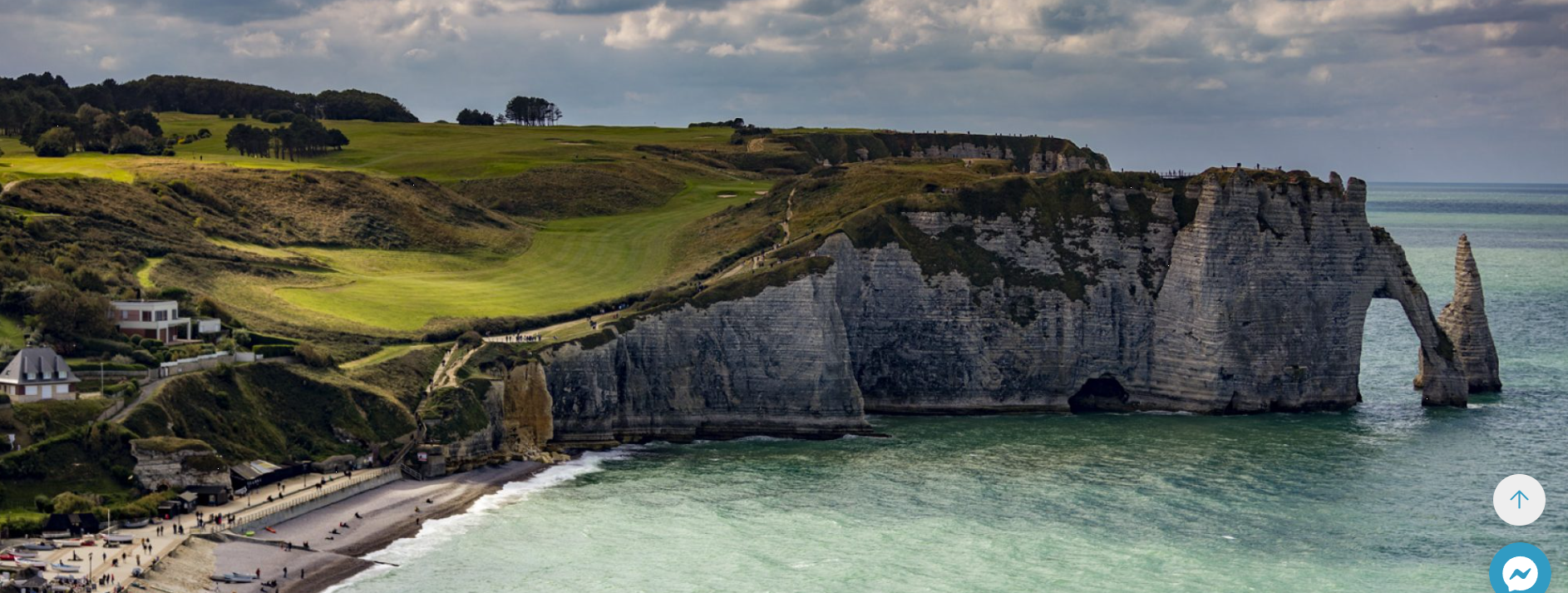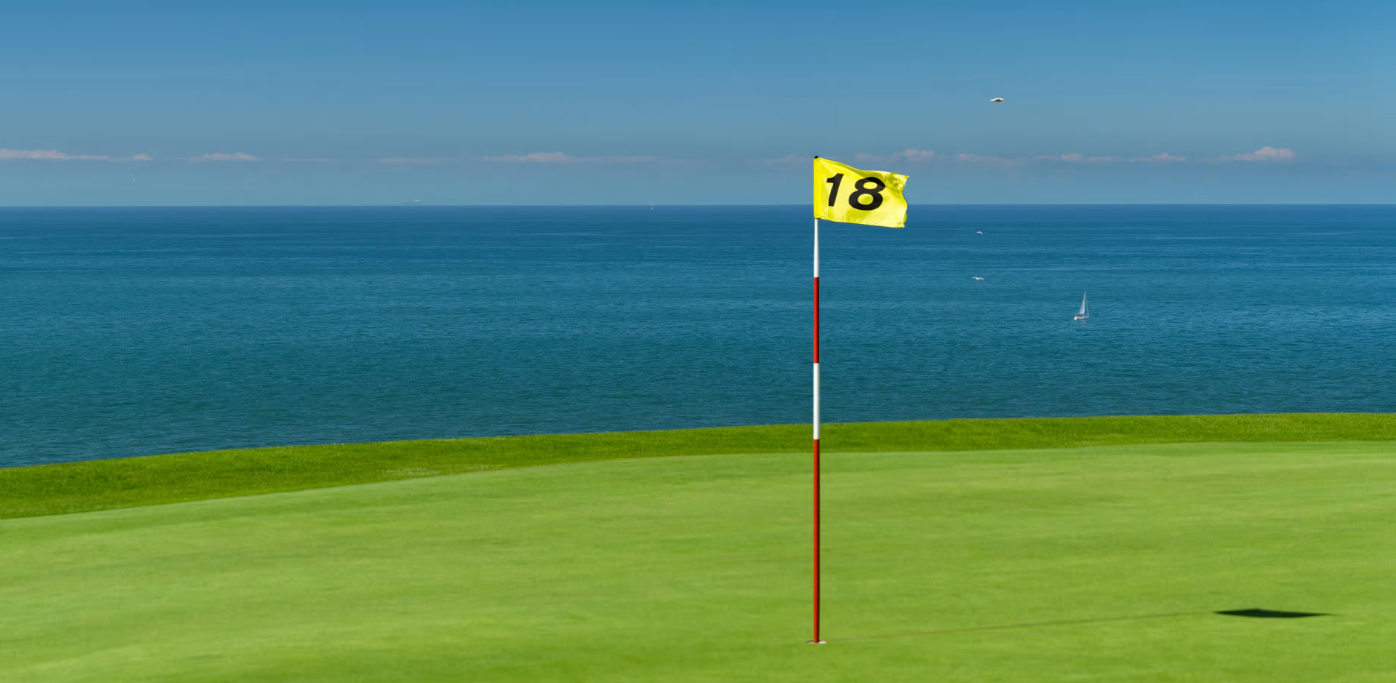Spectacular, stunning, dramatic, breath-taking and any other ‘take your breath away’ adjective is how you can only describe sensational D’Etretat Golf Club in the Normandy region of northern France.
This 18-hole layout is laid out on relatively flat land but some 50-metres high above chalk-coloured cliffs,
overlooking the Bay of Etretat and the English Channel. It’s around a 3-hour drive north-west of Paris and some two-hours driving east along the same coastline as the D-Day beaches.
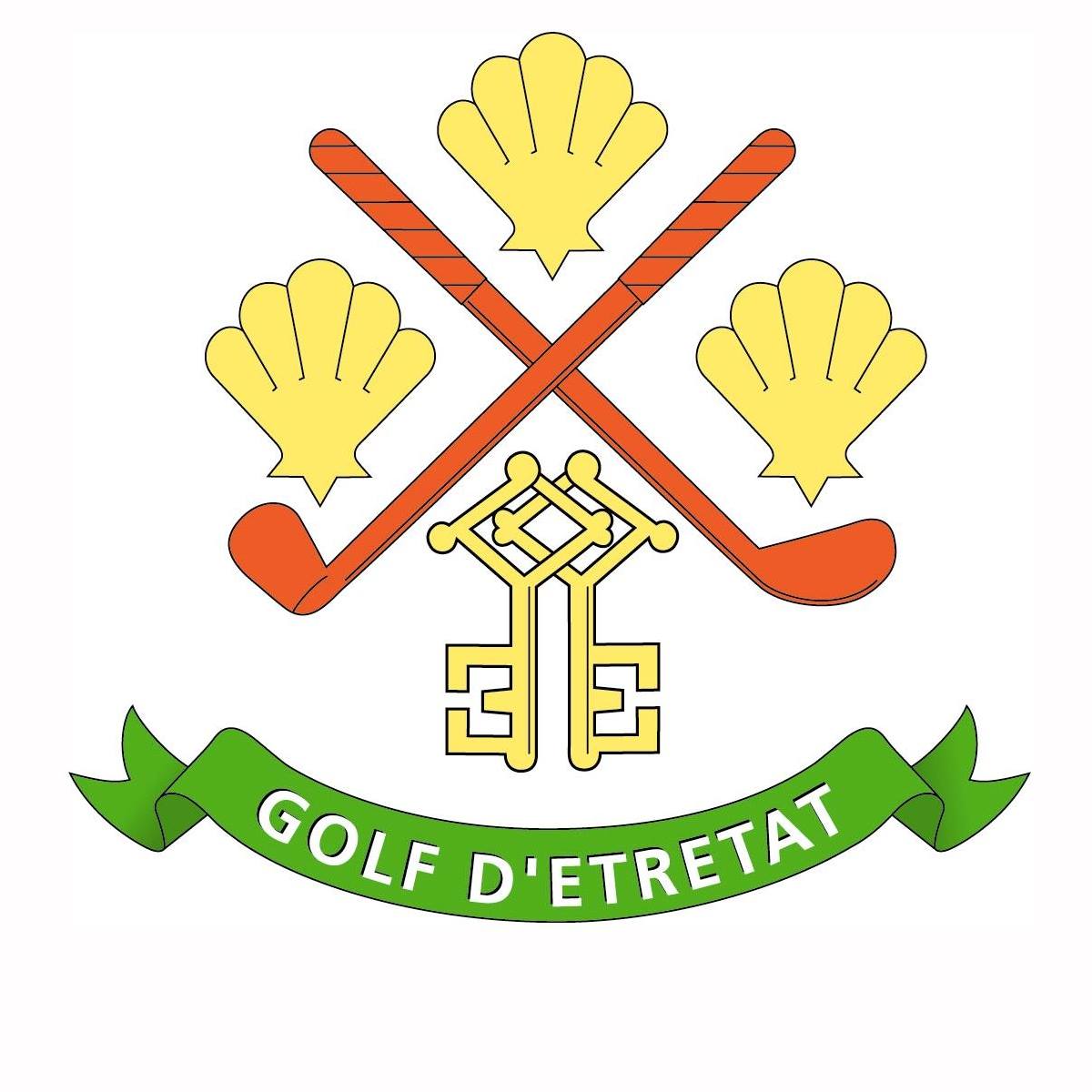 It is one of the more remarkable locations for a golf course I’ve had the pleasure to visit, so much so, I put it up there with the sheer enjoyment of playing the likes of Old Head in Ireland, Pine Cliffs in Spain while there’s also the equally stunning Thracian Cliffs that overlooks the Black Sea in Bulgaria, and where both Bernie (Co-host here at GolfByTourMiss) and I each won a nearest-to-the-pin pro-am prize just days ahead of Graeme McDowell capturing the 2013 Volvo Match-Play Championship.
It is one of the more remarkable locations for a golf course I’ve had the pleasure to visit, so much so, I put it up there with the sheer enjoyment of playing the likes of Old Head in Ireland, Pine Cliffs in Spain while there’s also the equally stunning Thracian Cliffs that overlooks the Black Sea in Bulgaria, and where both Bernie (Co-host here at GolfByTourMiss) and I each won a nearest-to-the-pin pro-am prize just days ahead of Graeme McDowell capturing the 2013 Volvo Match-Play Championship.
If you have any doubts just how spectacular D’Etretat is take a look at the club video:
Quoting from the D’Etretat club website, the golf course was created in 1908, mainly on the initiative, and like many marine golf courses (Wimereux, Hardelot, Dieppe, Dinard, Biarritz), of visits Brits crossing the Channel to spend the summer on the French coasts.
In fact, the first president of the Golf d’Etretat club was Bernard Forbes, 8th Count of Granard, and there are other peers of the crown among the very first honorary members of the club: Lord Denman, who served at Governor General of Australia from 1911-1914 and Lord Wodehouse, Baron of Kimberley.
The original course boasted only 13 holes that was designed by Julien Chantepie, architect of the Boulie golf course, in collaboration with Arnaud Massy, professional golfer who taught in D’Etretat and remains to this day the only Frenchman to have won the Open Championship in 1907.
It was in the period post World War 1 that a new clubhouse was built overlooking the current Dormy House hotel while the course was extended to 18 holes however it all changed with the outbreak of World War 11 and D’Etretat finding its installations ransacked and the course mined.
Fortunately, with the war over the club succeeded in obtaining war damages and even access to German prisoners of war to carry out the mine clearance. Finally, after nearly a decade when shut-off from playing, the course eventually re-opened in 1949.
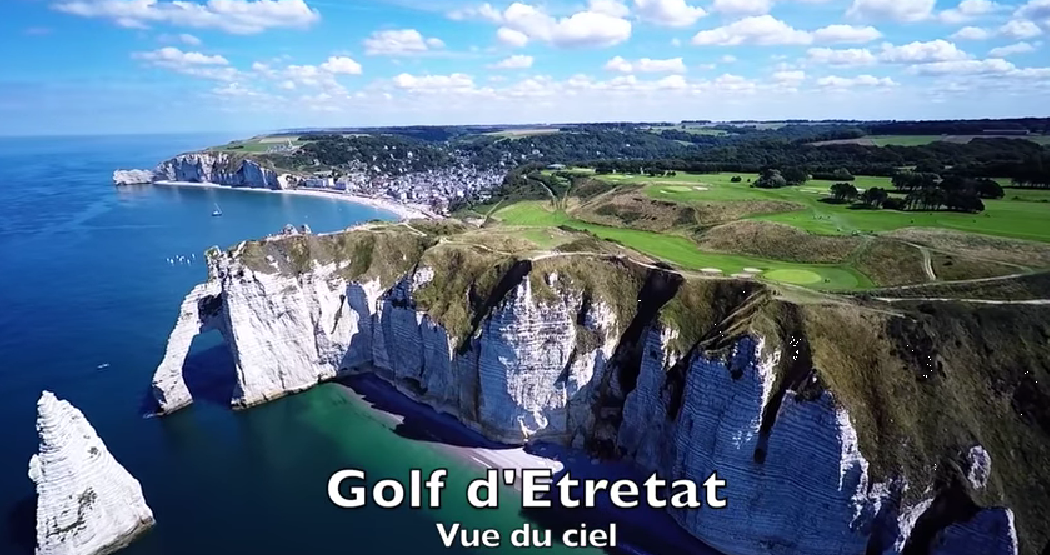
The cliptop 10th hole at the D’Etretat Golf Club with the Bay of D’Etretat along with beach and the town of D’Etretat. (Image with thanks D’Etretat GC)
As mentioned, D’Etretat is an 18-hole lay-out playing to 6,073 metres off the white tees, 5,656 metres off the yellow, 5,147 metres from the blue tees while off the red tees, it measures 4,732 metres.
The uphill par-5 10th hole, and one of the holes closest to the cliff-edge, is the No. 1 index hole and also among five par-5s at the club.
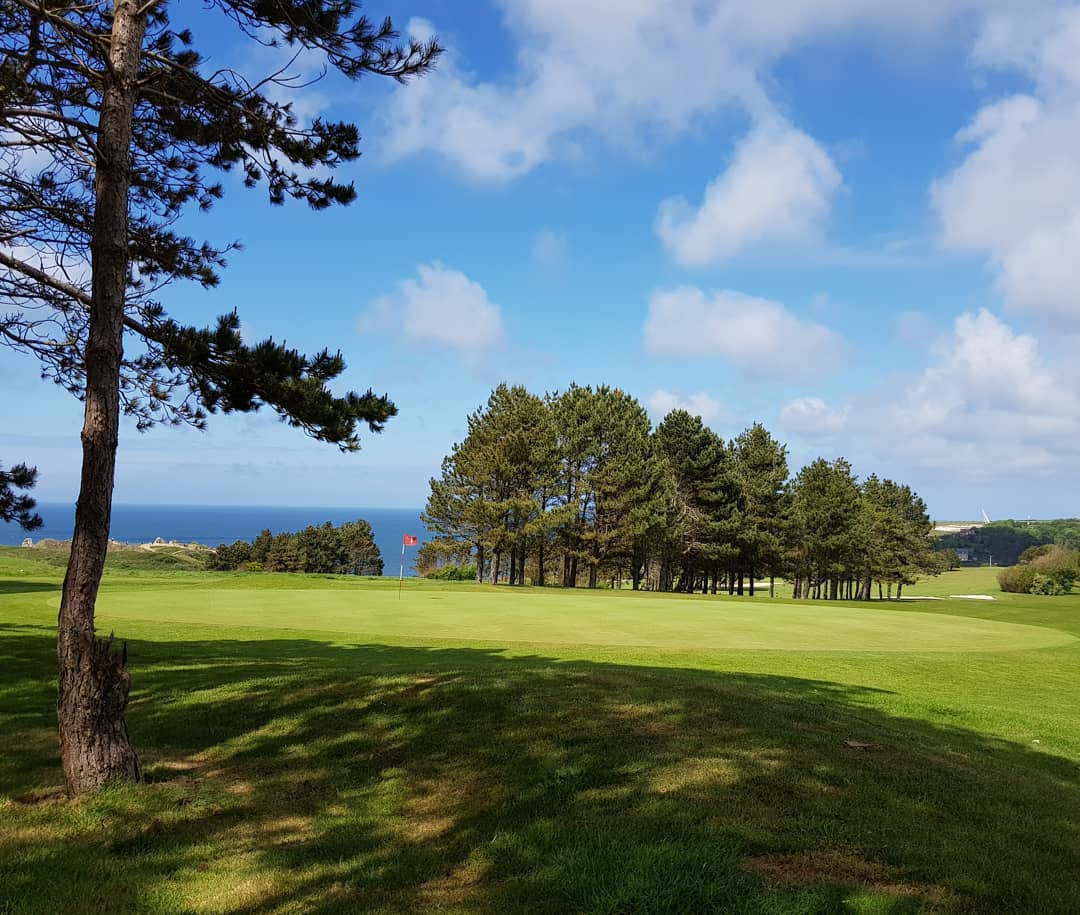
The opening hole at D’Etretat GC – A par-5 hole measuring 450-metres off the white tees. (Image with thanks D’Etretat GC)
The opening few holes are played along the leftside of the D’Etretat layout though it only takes to the fourth hole when the golfer is first close to the clifftop edge (see photograph hereunder).
The fourth green is also the furthermost hole from the clubhouse.
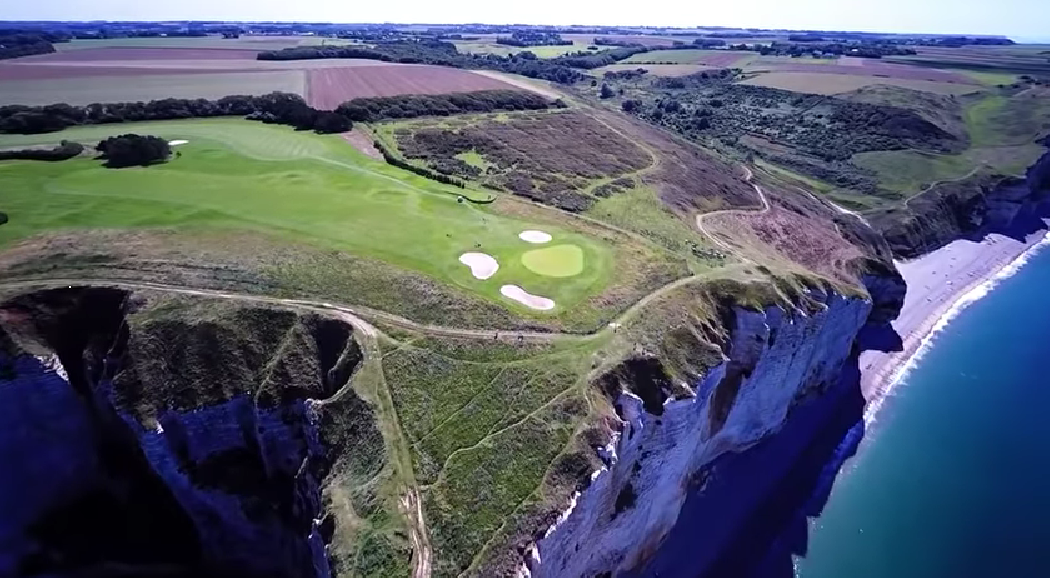
The 342-metre par-4 fourth hole – anything really long will find itself dropping 51 metres to the waters edge. (Image – D’Etretat GC)
The fifth and sixth holes are played back in the direction of the clubhouse while the seventh is played facing in the direction of the English Channel ahead of playing eight and nine back to the clubhouse.
The 177-metre (white tees) par-3 ninth hole is rated the No. 18 index hole.

The Golf D’Etretat clubhouse in the bottom of the picture – The 18th green in centre of the photograph (Two bunkers left of green as we look at the hole) (Image thanks Golf D’Etretat)
You walk off the ninth heading down the left side of the closeby 18th to the 10th hole – going from the ‘easiest’ hole to the ‘hardest’ – the No. 1 index hole playing to 450-yards.
A feature of the 10th hole, and all those holes running close to the cliff edge, is the presence of the public as there is a pathway allowing access all the way along the clifftop and beyond the reaches of the golf course.
A feature in playing this opening hole on your back nine is not just the steepness of the hole but also a pair of bunkers guarding the green – see photograph below.
The par-3 11th hole has you turning you back on the Channel but no sooner are you then facing this infamous body of water head-on than in playing the 445-metre (white tees) par-5 12th hole.
Be warned that in tackling the 12th hole, and much like the fourth hole, that are hitting straight towards the cliff edge, so suffice to say anything long could find itself falling the 50-metres to the water’s edge.
The next, the par-3 13th in ranked the No. 17 index hole, runs along the length of the cliff edge, and with a bunker front right of the green. However, it could be a real tester if there is any kind of wind coming in off the Channel, and here I am thinking of the par-3 15th at Portmarnock in Dublin, and where you could be facing a similar tee shot along with water’s edge, and where in strong windy conditions it’s not uncommon to start your tee way out over the Irish Sea shoreline.
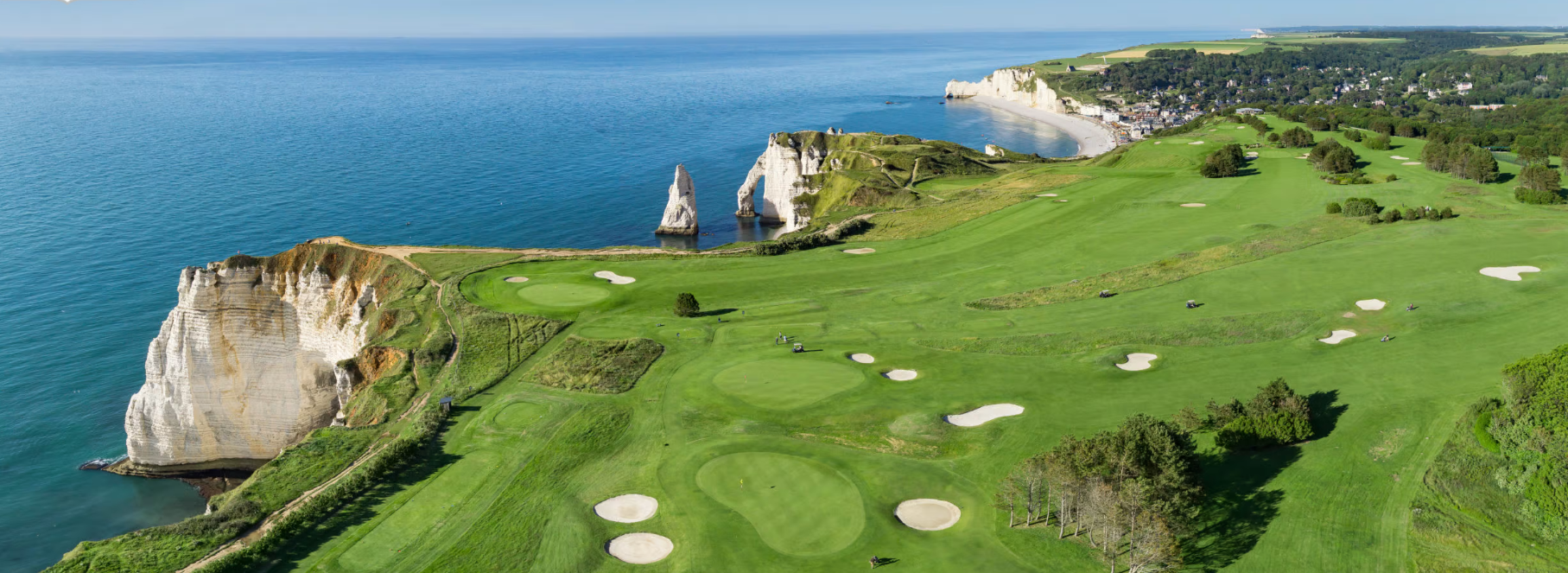
You cannot see the 13th green but the tee-shot is on the left side leading down to the bottom left corner.
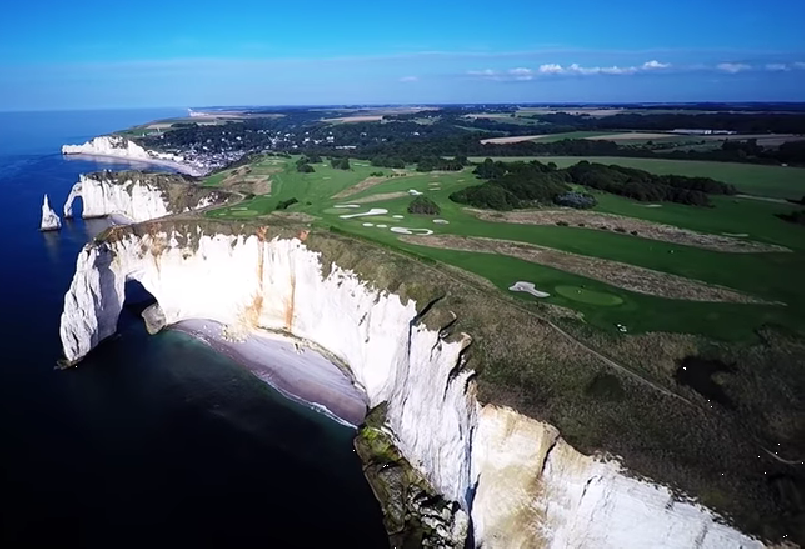
A better look at the 13th hole and the hole closest in this photograph to the cliff edge (Image – D’Etretat GC)
The par-4 14th playing to 353-metres (white tees) again takes you along the cliff edge, again very exposed if there’s any kind of decent breeze, and also needing to keep the golf ball in France (smiling).
No fear over the closing four holes as they’re away from the cliff edge in taking you back to the clubhouse.
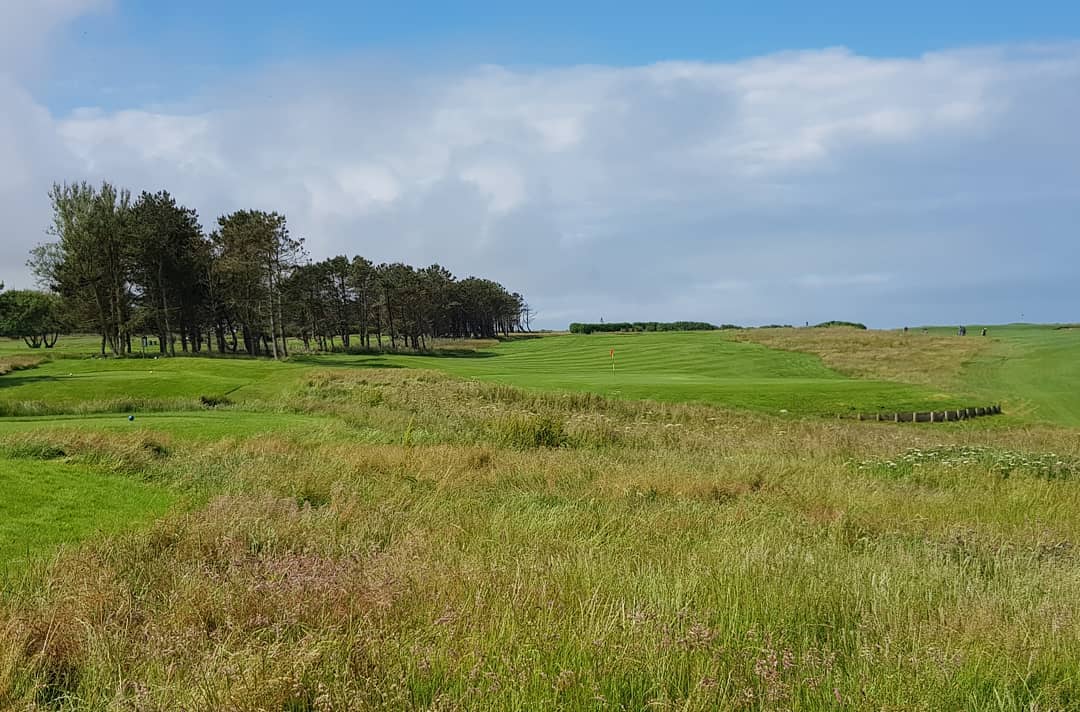
The tee-off area at the 16th (left in photo) with the 15th green behind – Image with thanks D’Etretat GC)
The 15th is a par-3 while 16 and 17 are par-4s, and with the final hole, a par-5 measuring 522-metres, the longest on the golf course by 52-metres. The 18th pretty much runs up the centre of the golf course with the first hole on your right and the eighth and ninth holes for company on the left.
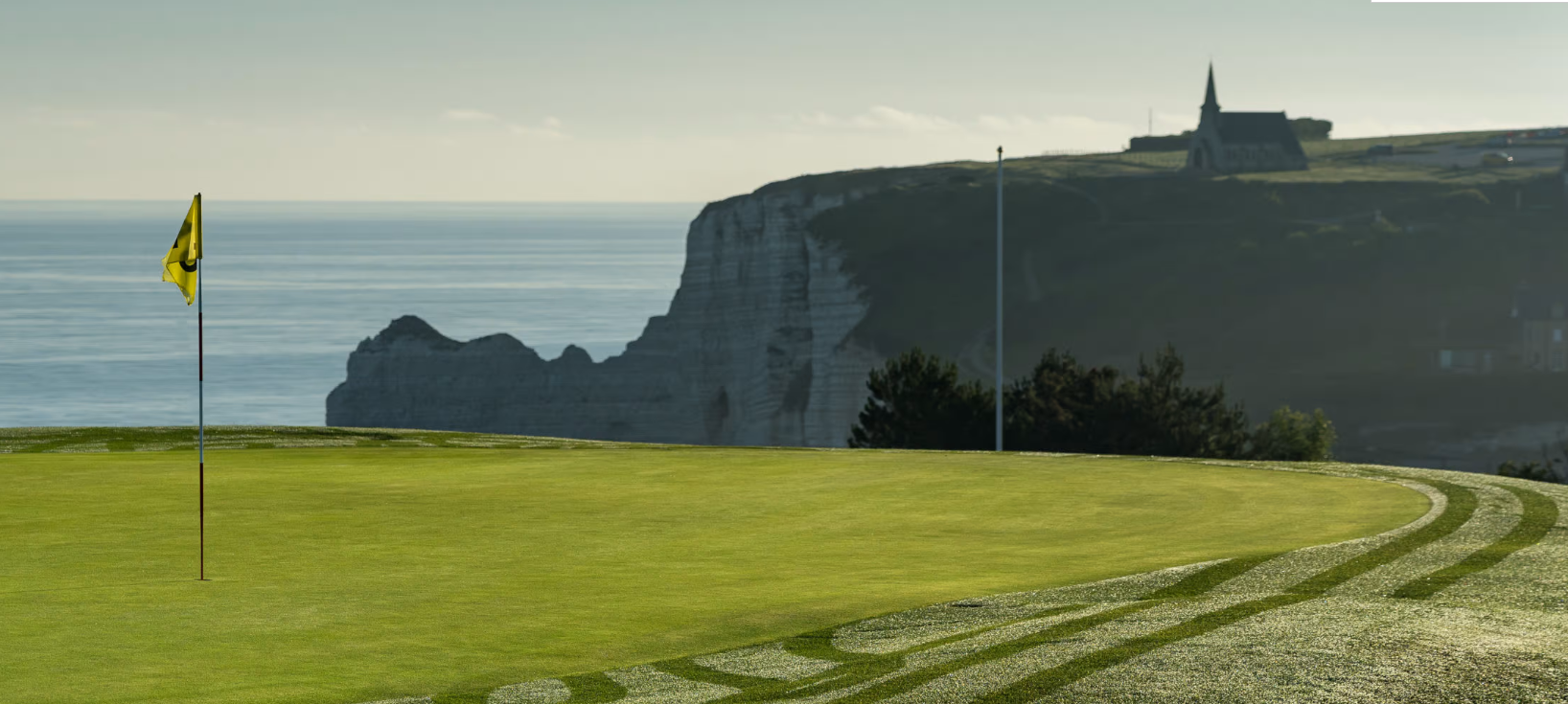
The 18th green at D’Etretat on an early morning & with Notre-Dame-de-la-Garde Chapel watching over the township in the distance. (Image with thanks D’Etretat GC)
D’Etretat, and as I had tried to portray at the outset, is one of those golf courses where you can find yourself completely distracted by the surrounding scenery. There are so many occasions where you simply want to stop to take a photograph.
Though like any golf course you must still treat it with respect and, if there should be any breeze, D’Etretat will surely have your attention particularly playing those handful of holes along the cliff edge.
Make it a goal to savour this wonderful golfing experience for yourself.
